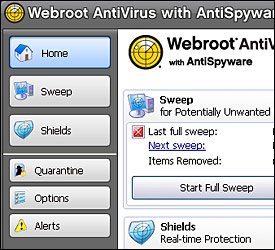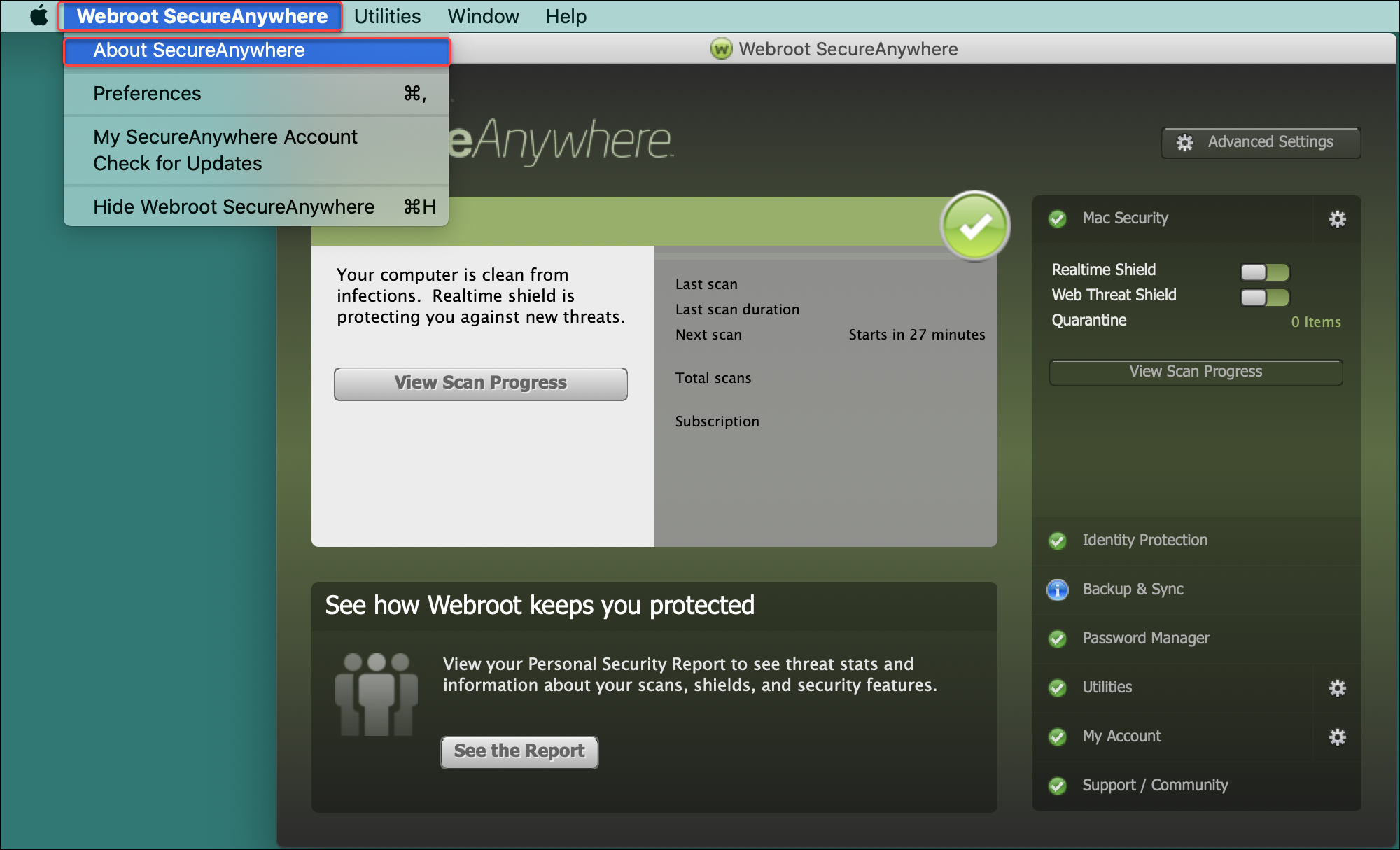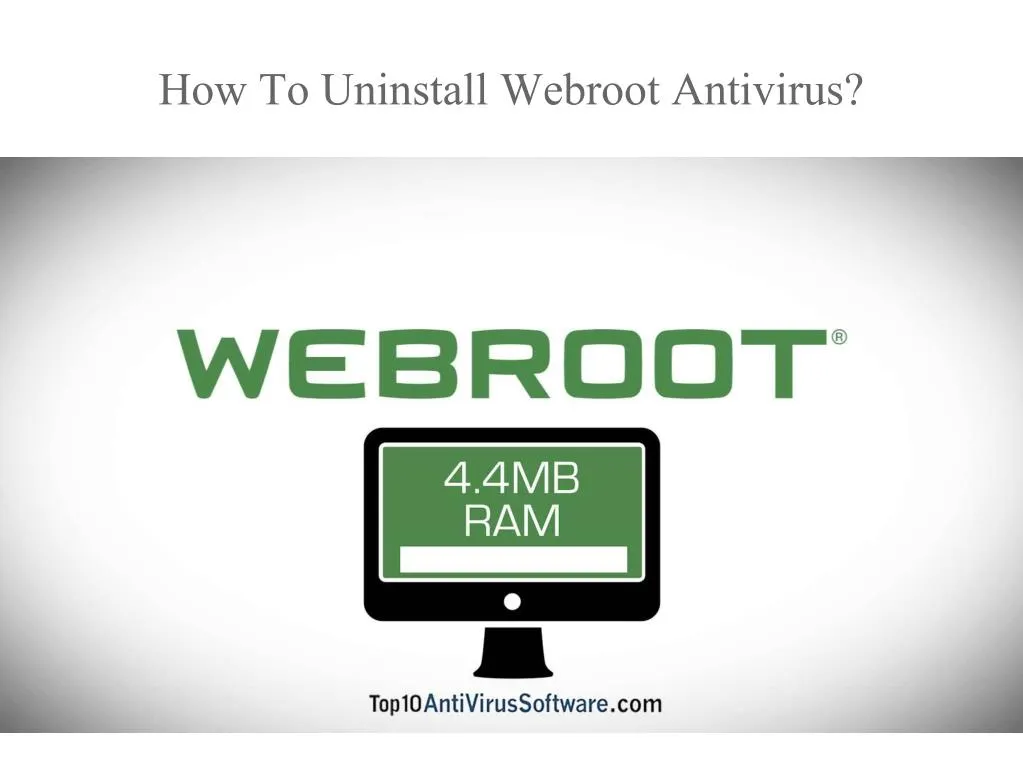

Kindly thoroughly read this step-by-step Webroot uninstalling tutorials to discover how to totally uninstall these off your Mac: Have used the original Webroot uninstall program to uninstall Webroot on Mac? Nevertheless, we urge that you could indeed then search your system for any remaining files. Uninstalling the antivirus program on Mac may not be as simple as move & drag towards Trash. Whenever you've had a preferable Webroot option, you may want to know how to thoroughly as well as properly remove Webroot SecureAnywhere upon macOS Big Sur by following the whole guide. Why then should you remove Webroot SecureAnywhere on such a Mac? Webroot got the poorest performance off of 20 competitors when regards to antivirus detecting frequencies as well as false alerts. How to Manually Uninstall Webroot on Mac? Automatically Uninstall Webroot on Mac Conclusion Part 1. How to Delete Webroot Residues on Mac Manually? Part 3. How to Manually Uninstall Webroot on Mac? Part 2. Don't worry, read out this tutorial below on how to uninstall Webroot on Mac!Ĭontents: Part 1.
#Remove webroot install
Worse than that, until another Webroot application has been completely uninstalled, you would be prohibited to install almost any replacement anti-virus application. Needless to say, numerous applications, including such Webroot's SecureAnywhere, have always been particularly difficult to remove from mostly your Mac.īecause the application lacks such an uninstall mechanism, you might well be required to have used a reCAPTCHA only in order to remove Webroot SecureAnywhere.
#Remove webroot trial
Indeed several anti-virus applications were also available to be used for a free trial period or have been provided free of charge price. This file has been truncated.We’ll talk about how to uninstall Webroot Mac easily. #Run the Windows Management Instrumentation Tester command:

#WMIC /Node:localhost /Namespace:\\root\Securit圜enter2 Path AntiVirusProduct get * /value #Open a command window as an administrator #Use WBEMTEST to remove the security center entries #Safe Mode run WRSA -uninstall #"C:\Program File (x86)\Webroot\wrsa.exe -uninstall" #The definitive guide to removing Webroot # Run the script once, reboot, then run again Here is the Webroot removal script I found that worked well for me: mrmsp/msp-script-dev/blob/main/remove-webroot.ps1 # Removes Webroot SecureAnywhere by force REG.exe ADD HKLM\SYSTEM\CurrentControlSet\Control\SafeBoot\Network\Syncro /f /ve /t REG_SZ /d Service # Reboot now in Safe Mode with Networking # List the current boot environments to the script output # Create Syncro variable dropdown with these values: list (default), reboot_safe_networking, reboot_normal, enable_f8, disable_f8
#Remove webroot Pc
# If the client PC is connected via WIFI the script will cancel itself as WIFI will not automatically connect in Safe Mode. You might not be able to login, but at least the next client login will get it back to normal. If you can't login, once a client logs in, it will start the reboot timer and clean itself up.

# Note you must login for the timer to begin. Returning to normal mode by running the script again also works. # Safe mode contains a 15 min return to normal mode automatically script. Shows available operating systems, reboot in safe mode with syncro, reboot back to normal, enable F8 startup key, disabled F8 startup key Here is my current safe mode boot script: mrmsp/msp-script-dev/blob/main/safe-mode-f8-reboot.ps1 # Reboot mode script. I know I had some lingering installs that kept Bitdefender from installing and I used an uninstall script that only worked in safe mode to finally get ahead of uninstalling webroot from those. I am pretty sure it does, but you can also check your webroot console.


 0 kommentar(er)
0 kommentar(er)
